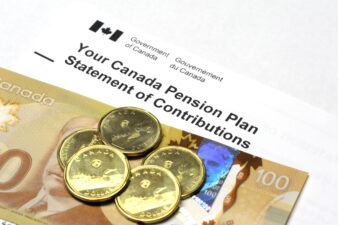Utility stocks are usually low-priority investments when the economic condition is stable. However, when volatility begins to emerge, or a market downturn looms, they are the safety nets of frightened investors. Such is the investment thesis for Hydro One (TSX:H).
The $20.61 billion premium large-scale utility company distributes electricity to end users in Ontario. Despite the slight decline in revenue (-0.9%) and sharp drop in net income (-45.5%) in 2021 versus 2020, you’d rather hold the stock than sell it.
Hydro One boasts a very stable business model and enduring operations. Even if a bear market or stagflation comes, you are sure to collect defensive income streams. The current share price of $34.63 is worth it, while the 3.10% dividend is safe.
Regulated business
Like most utility companies, Hydro One produces reliable cash flows, because the electric distribution business is rate regulated. The company operates under the Ontario Energy Board’s (OEB) Custom IR framework, and it owns 98% of Ontario’s transmission capacity.
Some market analysts say geographic limitation is a drawback for Hydro. However, it might not be so since the planned annual capital investments of $670 million to $1.14 billion until 2027 assure a growing rate base. Also, increasing system requirements and emerging industries should help drive the expansion of Hydro’s transmission network.
From 2022 to 2027, management projects the rate base to grow to $31 billion (6% CAGR). Currently, the combined transmission and distribution rate base is $23.6 billion. The organic growth from the continuing rate base expansion covers the replacement of aging infrastructure and grid modernization.
Lower earnings in 2021
After 2021, Mark Poweska, president and CEO of Hydro One, said, “As we emerge from the pandemic, we will continue to support economic recovery and growth by investing in a grid for the future and enabling electrification … Hydro One strives to improve the experience of our customers through providing excellent service, improving reliability and by building a more sustainable and resilient grid.”
In the year ended December 31, 2021, net income declined to $965 million from $1.77 billion in 2020. However, adjusted net income rose 6.9% year over year. Also, $1,75 billion worth of assets went into service compared to the $1,63 billion from the previous year.
Hydro One’s immediate concerns are addressing the aging power system infrastructure and facilitating connectivity to new load customers and generation sources.
Pilot program
In tandem with Peak Power, Hydro One launched a new pilot program as part of its plan to build a grid for the future. The partners will study the benefits of using electric vehicle charging technology to improve power resiliency and reliability for customers.
According to management, the two-way Vehicle-to-Home (V2H) charging technology has the potential to support the shift to electrification and a low-carbon economy for customers in Ontario.
Defensive asset
Hydro is best for income investors seeking defensive assets to mitigate market risks. Expect sustainable dividend payouts for years, given the company’s predictable growth profile and multi-year capital-investment program to grow the rate base.







